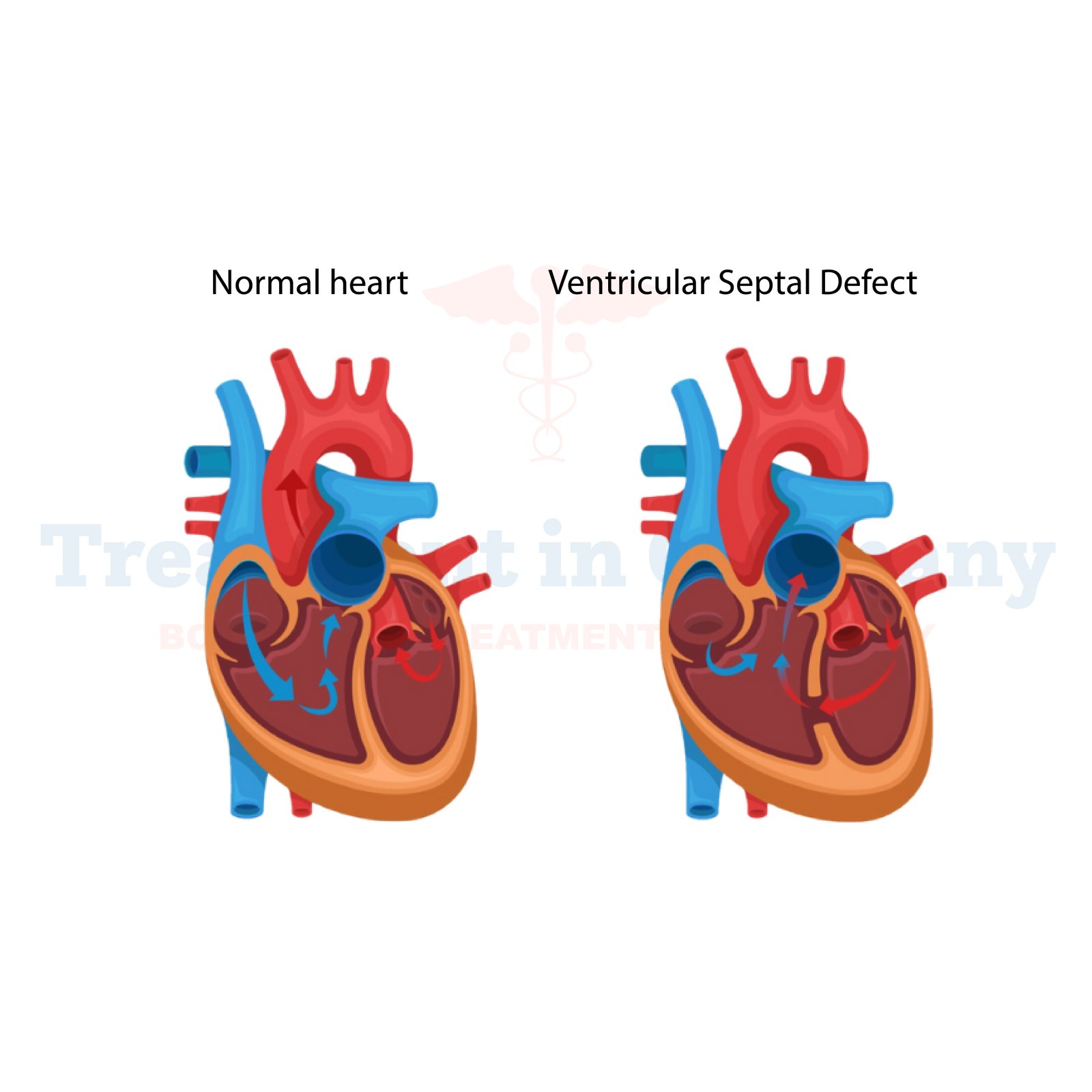What is Ventricular Septal Defect (VSD)?
Ventricular Septal Defect (VSD) is a congenital heart defect characterized by an abnormal opening in the septum, the wall that separates the lower chambers (ventricles) of the heart. This opening allows oxygen-rich blood from the left ventricle to mix with oxygen-poor blood in the right ventricle, causing the heart to work harder to pump blood to the body.
Side effects of Ventricular Septal Defect (VSD):
The severity of symptoms associated with VSD can vary depending on the size and location of the defect. Common side effects may include:
- Shortness of breath: Due to the extra workload on the heart, patients may experience difficulty breathing, especially during physical activity.
- Fatigue: The heart's increased effort to pump blood may lead to feelings of tiredness or weakness.
- Poor weight gain: Infants with VSD may have difficulty gaining weight or growing at a normal rate.
- Heart murmur: An abnormal sound may be heard during a physical examination, indicating turbulent blood flow through the defect.
How is Ventricular Septal Defect (VSD) diagnosed?
Doctors typically diagnose VSD through a combination of physical examinations, imaging tests, and cardiac catheterization. Diagnostic methods may include:
- Echocardiogram: This ultrasound imaging technique allows doctors to visualize the structure and function of the heart, helping to identify the presence and characteristics of a VSD.
- Electrocardiogram (ECG or EKG): This test records the electrical activity of the heart, which can help detect any abnormalities in heart rhythm or function.
- Cardiac catheterization: In some cases, doctors may perform a cardiac catheterization procedure to directly assess the blood flow and pressure within the heart chambers and blood vessels.
Potential treatments of Ventricular Septal Defect (VSD):
Treatment options for VSD depend on various factors, including the size and location of the defect, the patient's age, and overall health. Possible treatments may include:
- Observation: Small VSDs that cause minimal symptoms may not require immediate treatment but will be monitored regularly by healthcare providers.
- Medication: In some cases, medications such as diuretics or medications to help the heart pump more effectively (inotropic agents) may be prescribed to manage symptoms.
- Surgical repair: For moderate to large VSDs or those causing significant symptoms, surgical intervention may be necessary to close the defect. This can often be done using minimally invasive techniques, such as cardiac catheterization, or through open-heart surgery.
- Device closure: In certain cases, especially in older children or adults with small to moderate VSDs, a device may be implanted to close the defect without the need for open-heart surgery.
👉 Contact us for further information and receive a complimentary consultation.

.webp)
.webp)
 (1).webp)
 (1).webp)

.webp)
.webp)
 (1).webp)
 (1).webp)
